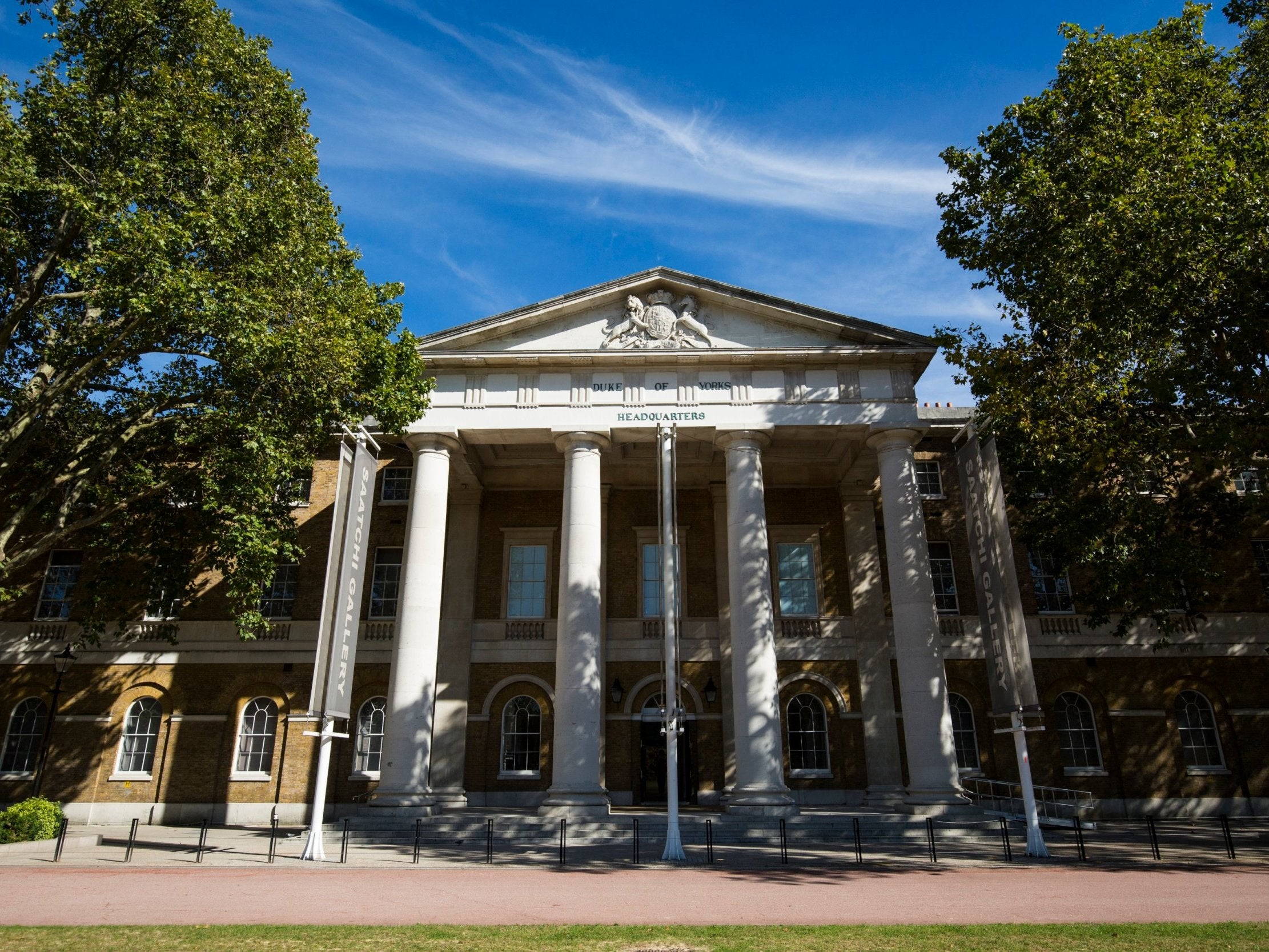Saatchi Gallery covers up two artworks after complaints from Muslim visitors
The two pieces are part of a new exhibition by the artist SKU, which explores how ‘we absorb such influences in our minds and our bodies’

Your support helps us to tell the story
From reproductive rights to climate change to Big Tech, The Independent is on the ground when the story is developing. Whether it's investigating the financials of Elon Musk's pro-Trump PAC or producing our latest documentary, 'The A Word', which shines a light on the American women fighting for reproductive rights, we know how important it is to parse out the facts from the messaging.
At such a critical moment in US history, we need reporters on the ground. Your donation allows us to keep sending journalists to speak to both sides of the story.
The Independent is trusted by Americans across the entire political spectrum. And unlike many other quality news outlets, we choose not to lock Americans out of our reporting and analysis with paywalls. We believe quality journalism should be available to everyone, paid for by those who can afford it.
Your support makes all the difference.The Saatchi Gallery has covered two paintings after complaints from Muslim visitors that the works are “blasphemous”.
The two pieces are part of a new exhibition by the artist SKU, featuring classical-style nudes overlaid with Arabic script, in a way that appears to imitate the American flag – intended to represent the conflict between the US and Islamic extremists.
However, according to The Times, the inclusion of the shahada, an Islamic creed and one of the Five Pillars of Islam, prompted a backlash, with Muslim visitors asking for them to be removed from the London gallery.
The head of Islamic studies at the think tank Quilliam, Usama Hasan, said the works were ”really dangerous”, adding: “It’s The Satanic Verses all over again.”
SKU’s exhibition was advertised as exploring “how we, as individuals, are subject to wider culture, economic, moral, and political forces in society”. It also examines how ”we absorb such influences in our minds and our bodies”, as well as the “promotion of values in symbols and propaganda”. The exhibition ends with a call to “reboot the world”.
The gallery rejected demands to remove the paintings entirely, arguing that visitors should be able to see the works and draw their own conclusions. The artist instead requested they were covered.
“It seemed a respectful solution that enables a debate about freedom of expression versus the perceived right not to be offended,” he said.
While the gallery said it “fully supported” freedom of expression as a fundamental right, it added: “the gallery also recognises the sincerity of the complaints made against these works and supported the artist’s decision to cover them until the end of the exhibition.”
Join our commenting forum
Join thought-provoking conversations, follow other Independent readers and see their replies
Comments